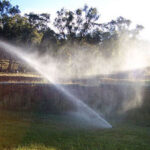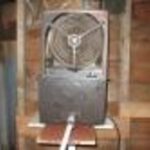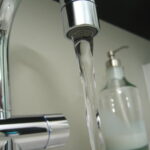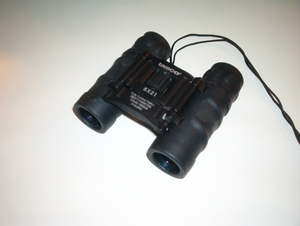The design of French Drains for a small backyard is fairly simple, whereas that of a large extent of land becomes more complicated. If pipes are used as conduits the design is even more complicated.
French drains are simple conduits for the draining of excess water from a low lying where water has stagnated to an outlet point. The design of French Drains without any pipes laid in it is relatively simple and does not require exceptional technical skills. The width and depth of a French drain largely depends on the quantity of water to be drained out from the waterlogged area and can be arrived at by either a rule of thumb or by a few trials. If the drains excavated are not sufficient additional drains can be interspersed between the existing drains with interconnections to drain off the additional water.
The design of French Drains incorporating perforated drainage pipes is more difficult and requires a fair amount of technical skills. Flow into a French Drain of this type is directly in proportion to what is known as the “effective radius” and the “effective conductivity” of the soil in which the drain is laid. A typical pipe of 4″ diameter will have and effective radius of approximately ½”. The number and spacing of the perforations in the pipe and the location of the pipe all contribute to the overall flow of water in the pipe. The percentage of flow into the pipe also depends on the shape of the trench and in general, enters from below and from the area relatively close to the drain. The drain should, of course, be filled with material conducive to the flow, more and over the surrounding soil.
Flow into the pipe will be reduced by the soil particles that migrate into it. It is for that reason that either gravel or hard broken granite stone of small dimensions is used. Geotextile material reduces this problem to a large extent when wrapped as the inner lining of the drain on the sides and the bottom of the pipe.
A detailed discussion of the complete design of a French Drain will involve a lot of calculations to be performed and literature on this is abundant. The design in these cases have to take into consideration the following criteria:
> rainfall amount and storm distribution,
> drainage area size, shape and orientation, ground cover, type of soil,
> slopes of terrain and stream(s),
> antecedent moisture condition,
> storage potential (overbank, ponds, wetlands, reservoirs, channel, etc.),
> watershed development potential, and
> type of precipitation (rain, snow, hail, or combinations thereof), elevation.
The tendency is to simplify the design as is required in the case of a relatively small extent of area to be drained, keeping in mind the points mentioned above. The design of a French drain for a particular locality will not be suitable to another and over and above the technical aspects, a fairly large amount of “common sense” is required in these designs.






